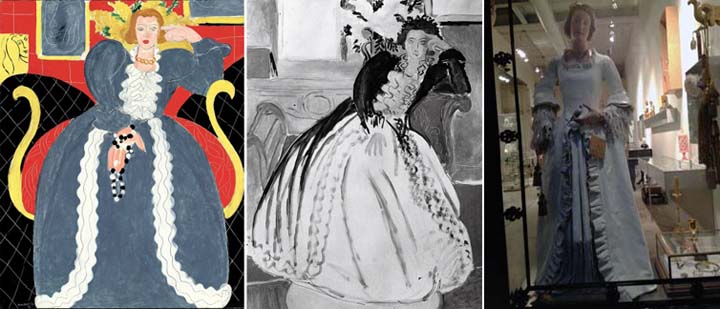Matisse: Work and Process Revealed
Painters and sculptors have made copies of works by past masters to advance their own art since the Renaissance. It’s a way of studying form, gesture, and volume, putting aside the drama of composition, for that part of the job has already been done. But there has never been an artist who copied his own work with the intensity of the great French modernist Henri Matisse (1869-1954). In an exhibition of 49 paintings and related photographs currently on view at the Metropolitan Museum of Art, the rigorous exploration of every possible nuance in the art of painting made by Matisse is stunningly revealed.
Roberta Smith wrote, in The New York Times, “The textbook simplicity of this format is irresistible. The visual self-schooling particular to looking at art kicks in, and almost before you know it your eyes are off and running, darting back and forth, parsing differences in style, brushwork, color, detail and overall effect, the expression of emotion that Matisse said he was always after.” [more]
In the 1930s Matisse hired a photographer to document his progress on certain paintings. His model and studio assistant Lydia Delectorskaya recalled that the photographer was called in “when, at the end of a session, it seemed to Matisse he had come to the end of his work or he decided he had arrived at a significant stage….”
Instead of setting his canvas aside and repeating the composition on a new canvas of identical size, as he had done in the 1900s and 1910s, Matisse used the photographs to preserve states of his paintings. He consulted them as he worked, comparing them to the painting in order to see whether he had advanced or regressed.

Left: Henri Matisse (French, 1869–1954). The Large Blue Dress, 1937,Oil on canvas; Philadelphia Museum of Art, Gift of Mrs. John Wintersteen, 1956© 2012 Succession H. Matisse / Artists Rights Society (ARS), New York. Center: Matossian.Photograph documenting Henri Matisse's process of painting The Large Blue Dress, 1937.February 26, 1937.Photograph; Philadelphia Museum of Art, HenryMcIlhenny Papers© 2012 Succession H. Matisse / Artists Rights Society (ARS), New York. Right: Photograph; Peggy Roalf.
“The Large Blue Dress,” from 1937, accompanied by a black-and-white photograph of an earlier state (above) and the actual garment, sewn by Lydia Delectorskaya, recalls Matisse: The Fabric of Dreams, the incredible exhibition organized by the Met in 2005, in which the fabrics that he drew inspiration from were brought together with the paintings in which they appear.
On leaving this ravishing show, I wandered down East 81st Street in a lightheaded daze, only to be stopped by the window display at De Vera (above right), clearly inspired by the "Blue Dress." Art and life, on the same wavelength, again...
Matisse: In Search of True Painting continues at the Metropolitan Museum of Art through March 17. 1000 Fifth Avenue at 82nd Street, NY, NY. View highlights from the exhibition.


